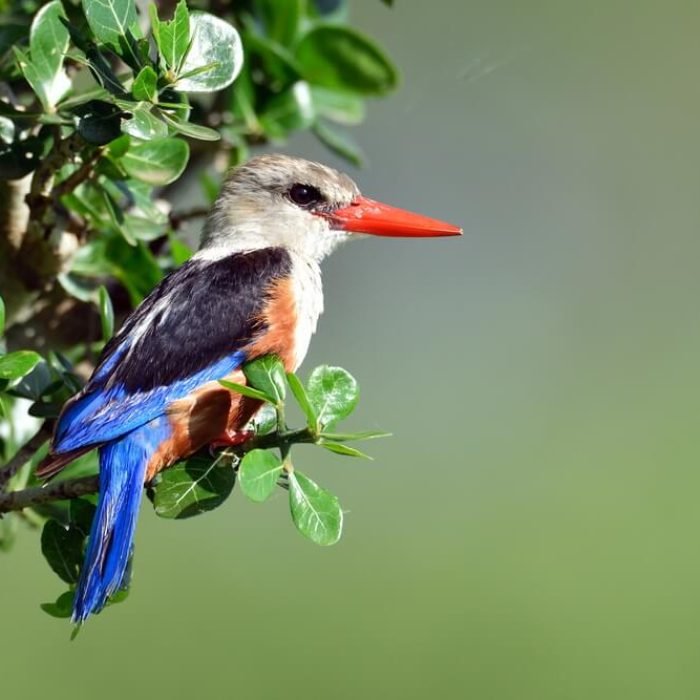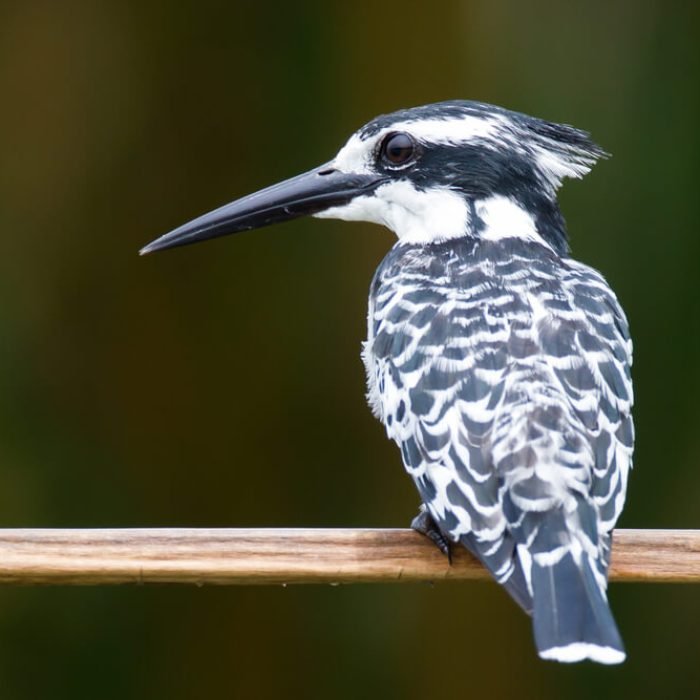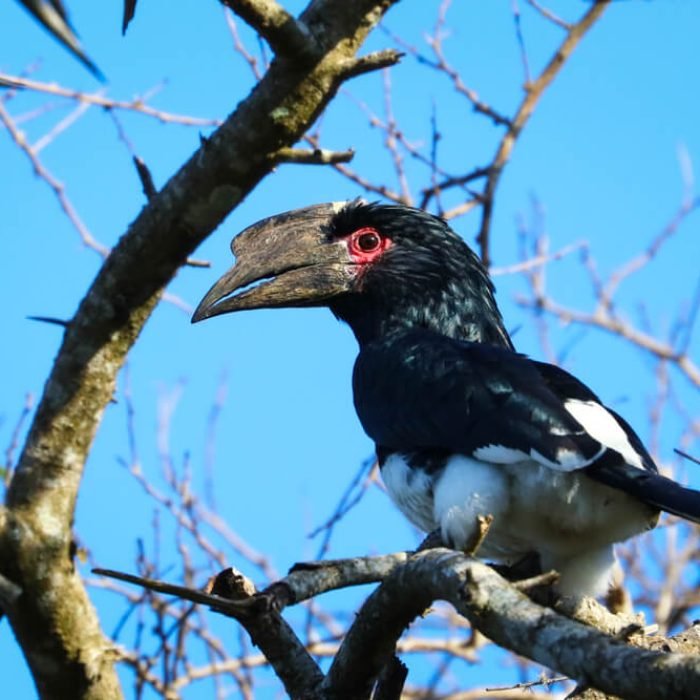Southern Carmine Bee-Eater
- Merops nubicoides
- IUCN Status: Least Concern
- Trend: decreasing

General Information
The southern carmine bee-eater (Merops nubicoides) is a species of bee-eater found across sub-equatorial Africa.
Description
This species, like other bee-eaters, is richly coloured and is predominantly carmine in colouration, but the crown and undertail are blue.
Fun Facts
From September to November, Zambia becomes the stage for one of Africa’s most breathtaking natural events—the arrival of vast flocks of southern carmine bee-eaters. While these vibrant birds range across much of sub-Saharan Africa, Zambia hosts an extraordinary concentration of the global population during breeding season, making it arguably the best place on Earth to witness their spectacular displays.
Diet
Their diet is made up primarily of bees and other flying insects, and their major hunting strategy involves hawking flying insects from perch. Perches may include branches of vegetation or even the backs of large animals, such as the kori bustard. They are attracted to wildfires because of the flushed insects, and are often seen circling high in the air. They circle larger animals and even cars to catch the insects that are trying to escape.
Reproduction
This is a highly sociable species, gathering in large flocks, in or out of breeding season. They roost communally in trees or reedbeds, and disperse widely during the day. Nesting is at the end of a 1 to 2 meter long burrow in an earthen bank, where they lay from 2 to 5 eggs.
Conservation
It is listed by the International Union for Conservation of Nature (IUCN) as, ” Least concern”.
Distribution and Habitat
From September to November, Zambia becomes the stage for one of Africa’s most breathtaking natural events—the arrival of vast flocks of southern carmine bee-eaters. While these vibrant birds range across much of sub-Saharan Africa, Zambia hosts an extraordinary concentration of the global population during breeding season, making it arguably the best place on Earth to witness their spectacular displays.
The birds’ annual cycle revolves around Zambia’s rivers:
-
August-November: Countless birds descend on Zambia’s riverbanks to nest, particularly along the Luangwa and Zambezi river systems
-
December-February: Some populations move south to Namibia and South Africa
-
March-August: Dispersal occurs to equatorial regions
What makes Zambia special is the sheer density of nesting colonies—some stretching hundreds of meters along river cliffs with thousands of nesting pairs. The country’s undisturbed river ecosystems provide perfect conditions, with:
-
Steep, sandy riverbanks ideal for tunnel nests
-
Abundant insect prey boosted by seasonal floods
-
Limited human disturbance at key nesting sites
Local conservation efforts have helped maintain these spectacular gatherings, with the Bangweulu Wetlands and South Luangwa National Park becoming world-renowned viewing destinations. For birders and photographers, Zambia’s carmine bee-eater season offers unmatched opportunities to observe their acrobatic hunting flights and intricate social behaviors at close range—a natural wonder that reinforces Zambia’s position as Africa’s premier birding destination.
The synchronized arrival each August transforms Zambia’s skies into a living kaleidoscope, as these crimson jewels establish their temporary homes—a phenomenon that represents one of the continent’s most concentrated avian migrations and a true highlight of Zambia’s wildlife calendar.
















